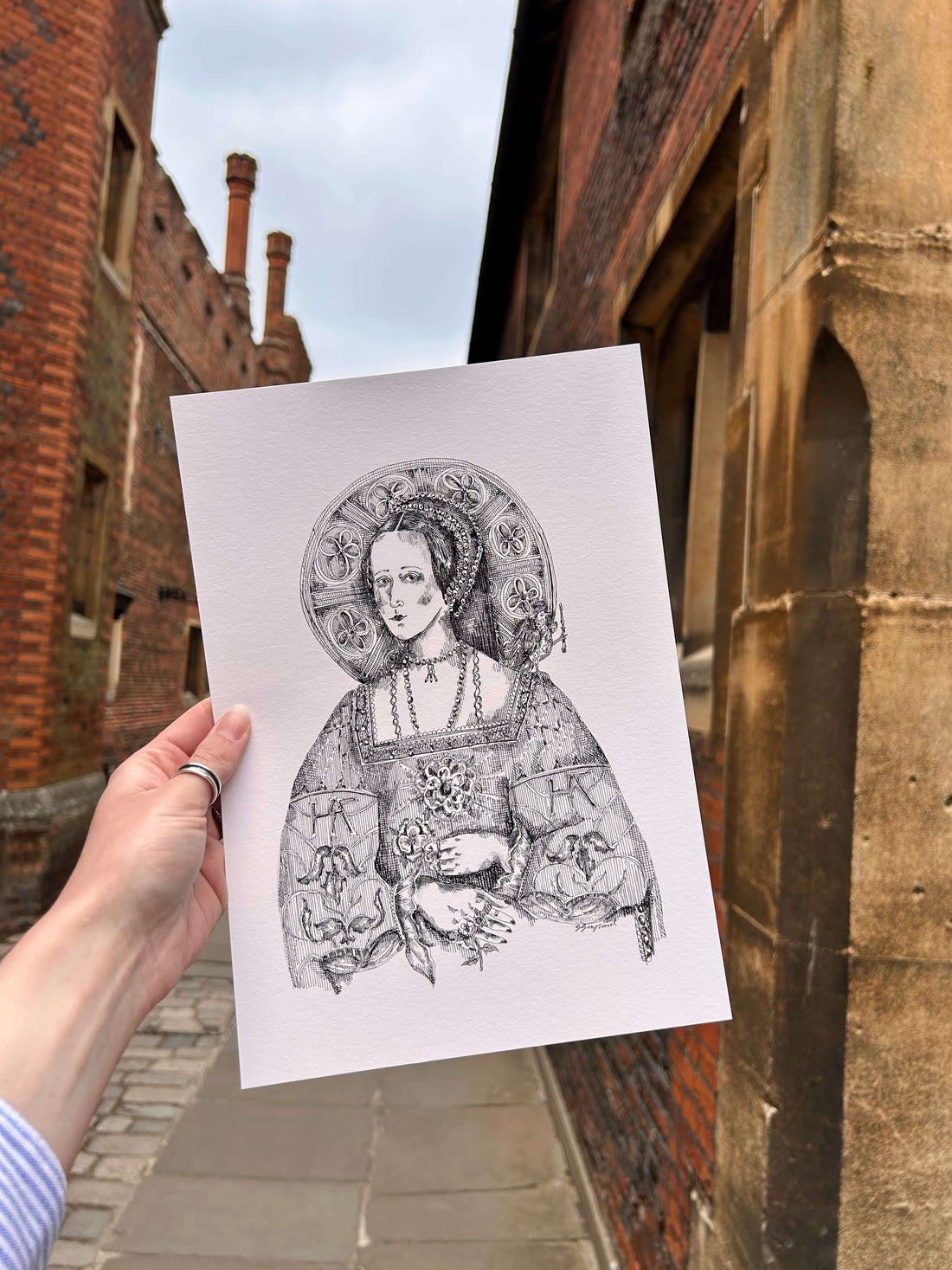On this day in 1536, Anne Boleyn—Henry VIII’s second wife, mother of the future Elizabeth I, and one of the most polarising figures in English history—met her death on Tower Green. The fall of Anne Boleyn was as dramatic as her meteoric rise, a story of power, passion, and politics that has captivated generations. But behind the romance and intrigue lies a tale of calculated ambition, religious upheaval, and the perilous nature of Tudor court life, where favour could vanish as swiftly as it appeared.
Today, nearly five centuries later, we remember not just her death, but the complex web of events that led to it.
A Meteoric Rise
Born sometime around 1501, Anne Boleyn spent much of her formative years in the sophisticated courts of the Netherlands and France, gaining the polish and poise that later set her apart at the English court. When she returned to England in the early 1520s, she quickly became a central figure in Henry VIII’s increasingly frustrated efforts to produce a male heir.
By the mid-1520s, Henry was entangled in what would become a seven-year pursuit of Anne, a woman who famously refused to become his mistress. Unlike her sister Mary, who had previously been the king’s lover, Anne was determined to hold out for marriage. In doing so, she changed not only her own fate but the religious and political trajectory of England.
Henry’s obsession with Anne—intelligent, witty, and fashionable—coincided with his growing desire to annul his marriage to Catherine of Aragon. When the Pope refused to grant a divorce, Henry broke with Rome, creating the Church of England and naming himself its Supreme Head. Anne was crowned Queen of England on 1 June 1533, already pregnant with the child both hoped would be a son.
It was a gamble. And it didn’t pay off.
Disappointment and Danger
Anne’s first pregnancy ended in the birth of a daughter—Elizabeth—in September 1533. While the child would later become one of England’s greatest monarchs, in 1533 she was a disappointment. Henry craved a male heir to secure the Tudor dynasty. Over the next three years, Anne suffered several miscarriages. Her failure to produce a son—combined with her strong-willed nature and political involvement—made her enemies at court.
Unlike Catherine of Aragon, who had endured her husband’s infidelities with quiet dignity, Anne was more vocal and less pliant. She argued with Henry, challenged his advisers, and took an active interest in foreign and domestic affairs. While these qualities may have initially captivated the king, they did little to endear her to a conservative court already wary of her influence.
By 1536, Anne's position was growing precarious. Catherine of Aragon had died in January that year, and with her death, Henry was no longer legally bound by any papal ruling concerning his first marriage. His gaze had already begun to drift towards one of Anne’s ladies-in-waiting—Jane Seymour—who presented herself as meek and submissive, everything Anne was not.
Then, in late January 1536, Anne miscarried a male foetus. The blow was catastrophic. Rumours swirled that the child had been deformed—considered a bad omen in Tudor England. Henry, perhaps already emotionally and politically distancing himself from Anne, began to question whether his second marriage had been cursed.
A Ruthless Unmaking
Enter Thomas Cromwell, Henry’s chief minister, and a man whose political fortunes were closely tied to Anne’s. Once allies in the reformist cause, Anne and Cromwell had by 1536 become fierce rivals. She sought to place her own supporters in positions of influence; Cromwell, ever the pragmatist, saw her weakening position and acted swiftly to secure his own survival.
Over a few short weeks, Cromwell constructed a case against Anne based on alleged adultery, incest, and treason. It was an audacious move. For a queen to be unfaithful was not merely a personal betrayal—it was a threat to the very legitimacy of the succession.
Between late April and early May, five men were arrested, including Anne’s own brother, George Boleyn, Lord Rochford. The charges were almost certainly fabricated. The alleged dates of the affairs were either demonstrably false or logistically impossible. Nonetheless, the trials went ahead. Under intense pressure, confessions were extracted—most notoriously from the court musician Mark Smeaton, likely through torture or threats.
Anne was arrested on 2 May 1536 and taken to the Tower of London. There, she maintained her innocence with composure and dignity. Her trial, held on 15 May, was a formality. She was found guilty and sentenced to death.
Execution and Legacy
On the morning of 19 May 1536, Anne Boleyn walked to the scaffold on Tower Green. She wore a gown of damask and a mantle of ermine. Witnesses remarked on her calmness, her courage, and her composure. In her final speech, she praised the king, asked for prayers, and forgave her accusers.
The execution was swift. Henry, perhaps out of some lingering affection—or perhaps to preserve the dignity of his court—had sent for a French swordsman, renowned for his skill. With a single, clean stroke, Anne Boleyn’s life was ended.
She was buried in an unmarked grave in the Chapel of St Peter ad Vincula within the Tower grounds, beside the very palace where she had once reigned.
An Enduring Fascination
Anne Boleyn’s downfall has long fascinated historians and the public alike. She was neither wholly victim nor wholly villain. She was ambitious, intelligent, and assertive in a world where women were expected to be none of these things. Her marriage to Henry VIII changed the religious structure of England forever, yet her own influence was swiftly extinguished.
In death, Anne became legend. Elizabeth I, though rarely speaking of her mother, wore Anne’s initial in her jewellery and ensured the memory of the Boleyn name was not erased. Later centuries would reframe Anne as a martyr of conscience, a proto-feminist figure, a victim of tyranny.
Today, on the anniversary of her execution, we remember Anne Boleyn not simply as a queen who failed to give Henry a son, but as a woman who dared to reach too high in a treacherous court. Her story reminds us of the brutal nature of power in Tudor England—where even a queen could be discarded, accused, and executed when she was no longer useful.
To mark the anniversary of her death we have collaborated with talented illustrator Gisela Gayleard who has created the most beautiful hand drawn print of Anne Boleyn. Gisela creates beautiful ink illustrations inspired by history, English folklore, nature and her own fantasy worlds. You can find more of her work @gisela_illustrations and https://giselagayleard.com

